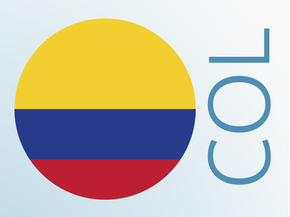Assumptions
Historical emissions
Historical emissions for 1990-2021 are taken from PRIMAP (Gütschow et al., 2022) .
LULUCF
LULUCF data for 1990-2018 is from the Third Biennial Report (BUR3). Data in the BUR3 uses global warming potential values from the IPCC’s fifth assessment report (AR5). The CAT uses AR4 values for all countries to ensure comparability of data.
We have taken emissions for the land category (3B) and harvested wood products (3D1) only. No conversion is needed as these are CO2 emissions only. There is insufficient data to extract any land sector emissions from the 3C category. This category is between 8-12 MtCO2e (AR5) for the time series, thus our historic series may slightly overestimate Colombian emissions, excluding land use.
NDC and other targets
NDC targets were obtained from the Colombia’s updated NDC submitted to the UNFCCC in December 2020 and were calculated excluding LULUCF.
In its updated NDC, Colombia provided a sectoral breakdown for its BAU projections, including disaggregating its net AFOLU emissions by IPCC category. We have assumed net LULUCF emissions for Colombia’s BAU projections are equivalent to IPCC category 3B. While there are some net emissions in 3C, historically, these have been negligible.
We estimate the extent to which Colombia will use land sector reductions to achieve its NDC based on the estimates provided in Annex M1 of its NDC update and the accompanying mitigation annex and exclude these from our estimate.
The listed measures are not enough to achieve Colombia’s emissions limit, based on its BAU projections. In past assessments to account for the uncertainty around the extent to which future mitigation measures will rely on the land sector, we used a range. The lower bound was based solely on the LULUCF measures as listed in the NDC. For the upper end of the range, we applied the relative ratio of LULUCF mitigation measures to other mitigation measures, as contained in the NDC Annex, and apply that to the additional emission reductions needed to achieve the target. In other words, we assumed that Colombia would adopt additional LULUCF measures at the same ratio as those listed in its NDC to account for the needed NDC reductions. In its latest Biennial Report, Colombia has provided further information on the mitigation measures it will undertake to achieve its NDC, while some of these measures may address land sector emissions to a small degree, they are largely focused on other sectors, principally the waste sector. As such, it is unlikely that Colombia will announce additional LULUCF measures at the same ratio and thus we have dropped the top end of our NDC range.
Note: In this assessment, we have used a AR5 to AR4 conversion factor based on the a gas-by-gas breakdown for 2018 emissions from the BUR3, so the quantification of the target varies slightly from the numbers used in previous assessments.
Current policy & planned policy emission projections
To estimate current policy emissions levels, we subtract those mitigation measures outlined in Colombia’s NDC that are being implemented from the BAU projections provided in the NDC (excl. LULUCF) and harmonise to the last historic year (Gobierno de Colombia, 2020c) (IDEAM, 2021).
We use the information provided in the BUR3 to determine which policies are being implemented and which are still in the planning stage. We use the mitigation potential estimates in the BUR3, in cases where those differ from the NDC update, except for fugitive emissions. There we use the estimated reductions from the regulations (Ministry of Mines and Energy (Colombia), 2022). The range of estimates is due to a range of estimates in the energy sector.
We apply the same approach for the planned policies scenario, although we also include any new measures reported on in the BUR3 and not just those outlined in the NDC update. The key changes are in the waste sector, as Colombia has now provided mitigation potential estimates for some of the measures it is planning in that sector.
We assume all mitigation potential quantifications in the NDC update and BUR3 use AR5 values, which we convert to AR4.
The projections do not include measures planned in the land sector. Some of the mitigation measures proposed in agriculture will also affect land use. For the largest measure, sustainable beef production, we assumed that half of the mitigation potential is attributed to land use and the other half to agriculture.
Global Warming Potential values
The CAT uses Global Warming Potential (GWP) values from the IPCC's Fourth Assessment Report (AR4) for all its figures and time series.
Further analysis
Country-related publications
Stay informed
Subscribe to our newsletter
